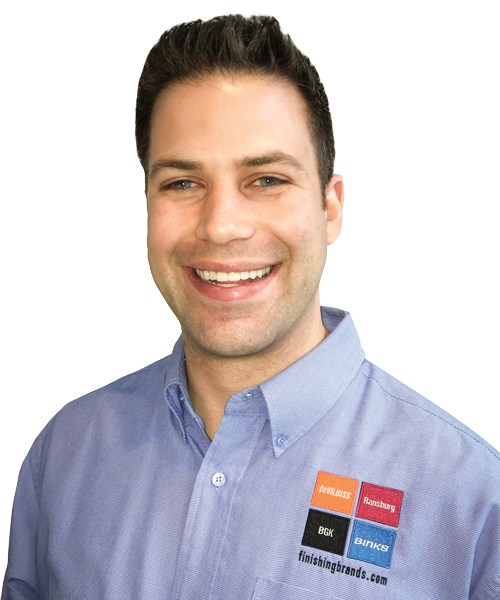Liquid Clinic: Is Air Free?
What's the cost of compressed air and how can a business calculate air consumption?

Q. We are trying to determine all of our operation costs. So how much does the air cost that I use in my spray gun?
A. Is air free? Technically, the air we use is free, but the cost to compress that air is not. Factors to consider are:
- Local electrical costs
- Type of compressor
- Pressure used for spraying
- CFM consumed
- Amount of time the trigger is being pulled
- Number of coats being applied
- Efficiency of the gun/cap/tip combination
Before getting into the cost calculation, let’s cover some of the not-so-obvious factors. The air pressure supplied to the spray gun should be set at the lowest pressure that will enable the atomization required and still accomplish the production required. Higher pressures result in higher air consumption, therefore, higher electrical costs.
In general, it is more economical to apply the finish coat in one pass than using two thinner coats. Less paint is used and less electricity. Be sure to check your coating's technical data sheet for proper application and film builds. To find out actual air consumption, check the literature supplied with the spray gun. For pressures not listed in the literature, contact your equipment manufacturer or supplier. To calculate the daily electrical costs for the air in a spray gun use the following formula:
DC × HD × EC × CFM × 0.228.
- DC = Duty cycle, the percent of time trigger is pulled
- HD = Hours in work day
- EC = Electrical cost per kilowatt hour (0.0935 national commercial average)
- CFM = CFM rating or air consumption of the gun
- 0.228 = Electrical consumption of 1 CFM in KWh
For example, what is my annual cost to supply the air for my 18 CFM air cap? How much would I save if I lowered my pressure to a pressure that consumes 12 CFM or use a different air cap that consumes 12 CFM?
My factors are:
- Duty cycle = 50 percent
- Work day = 15 hours
- Cost per KWh = $0.10
- Days per year = 250
- 18 CFM Air Cap
0.5 × 15 × 0.1 × 18 × 0.228 × 250 = $769.50 annual electrical costs.
Compare the above to a gun/pressure combination consuming 12 CFM: 0.5 × 15 × 0.1 × 12 × 0.228 × 250 = $513.00 annual electrical costs.
Lowering air consumption by using lower air pressures or using an air cap with less air consumption would result in an annual savings of $256.50 per spray gun. The above calculations are based on typical efficiencies and are approximate. The change in cost is proportional and is correct as a percentage of the higher cost.
Focusing on reducing the air costs of your spray gun is just the beginning for reducing air costs in your finishing department. Circulation pumps are another focal point for reducing air consumption with the electric circulation pumps available in the marketplace today. The easiest air savings that your facility will benefit from right away are repairing air leaks. Just one 1/8" leak could be costing your facility over $1,500 per year.
Justin Hooper is the strategic IoT manager and product manager at Carlisle Fluid Technologies. Visit Carlisleft.com.
Originally published in the October 2016 issue.
Related Content
Robots, AI and Superb BMW Surfaces
There isn’t an automotive paint shop in the world that doesn’t have post-paint inspection and defect processing. But BMW is doing this with levels of technology at a plant in Germany that exceed all other paint shops in the world.
Read MoreCuring Oven Basics
Simply heating up the substrate does not cure the coating. There are many variables to consider when choosing the best cure oven for your application...
Read MoreShedding Light on Surface Inspection
State-of-the-art reflector-based lighting system improves luminosity and ergonomics for surface inspection tasks while reducing energy usage.
Read MoreZinc Phosphate: Questions and Answers
Our experts share specific questions about zinc phosphate and pretreatment
Read MoreRead Next
Education Bringing Cleaning to Machining
Debuting new speakers and cleaning technology content during this half-day workshop co-located with IMTS 2024.
Read MoreEpisode 45: An Interview with Chandler Mancuso, MacDermid Envio Solutions
Chandler Mancuso, technical director with MacDermid Envio discusses updating your wastewater treatment system and implementing materials recycling solutions to increase efficiencies, control costs and reduce environmental impact.
Read MoreDelivering Increased Benefits to Greenhouse Films
Baystar's Borstar technology is helping customers deliver better, more reliable production methods to greenhouse agriculture.
Read More

























